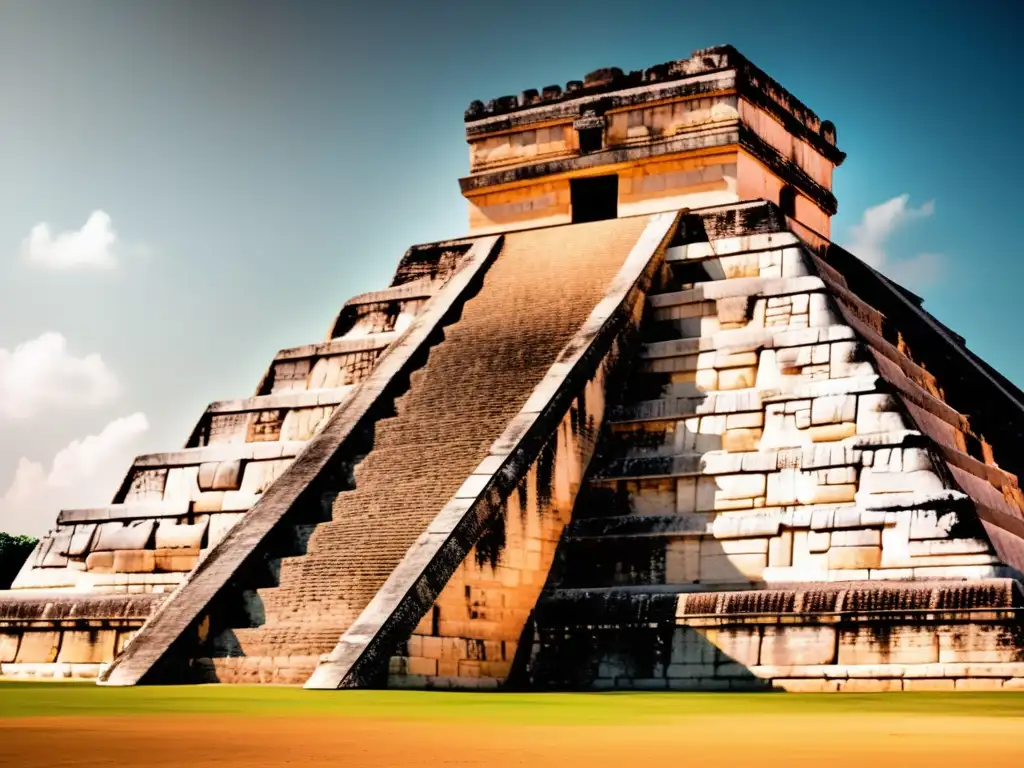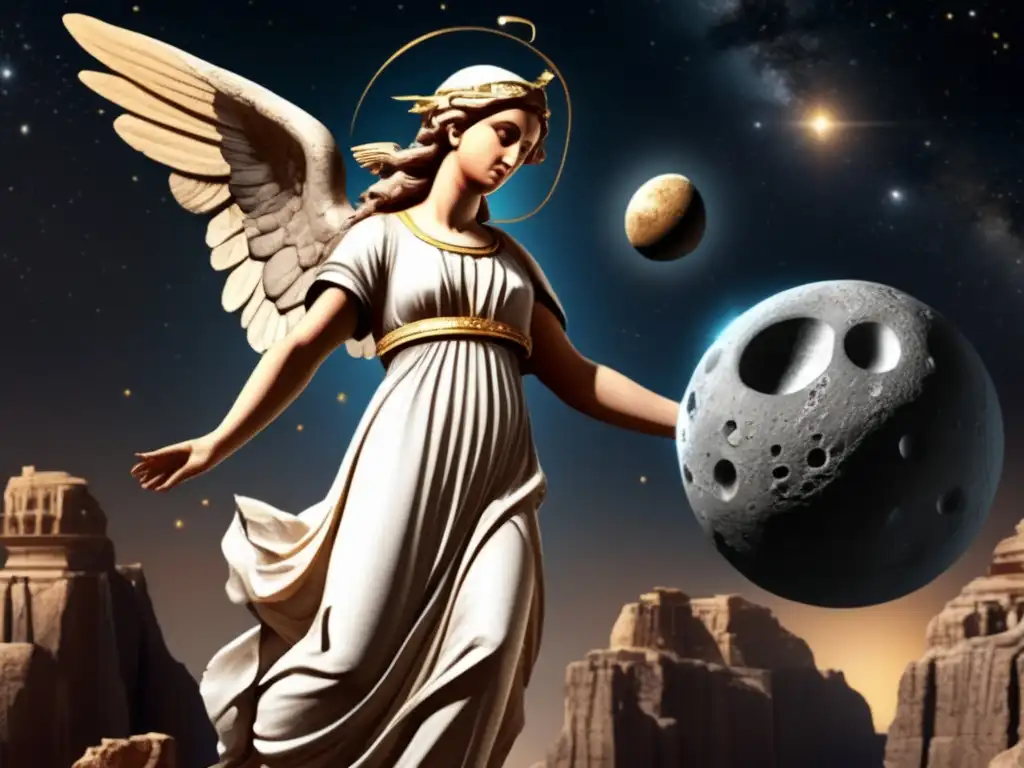Asteroid Mythology In Ancient Architecture And Design

Introduction
Asteroids have long been a source of fascination for humanity. For thousands of years, people have looked up at the night sky and wondered about the mysterious rocks that orbit our planet. Throughout history, asteroids have played a significant role in mythology, religion, and culture, and their influence can be seen in art and architecture from ancient civilizations all over the world.
In this article, we will explore the fascinating world of asteroid mythology in ancient architecture and design. From the Greek goddess Eurydice to the Mayan emperor Pacal the Great, we will delve into the stories behind some of the most spectacular feats of architectural and engineering prowess from around the globe.
Greek Mythology: The Story of Eurydice

The Tale of Eurydice and Orpheus
In Greek mythology, Eurydice was a nymph who was married to the musician Orpheus. When she died suddenly, Orpheus was devastated and decided to descend into the underworld to try and bring her back to life.
Orpheus was able to use his music to charm the gods and persuade them to let Eurydice leave the underworld with him. However, he was warned not to turn around and look at her until they had reached the upper world.
As they were nearing the end of their journey, Orpheus could not resist looking back to make sure Eurydice was still following him. Unfortunately, this caused her to be dragged back down to the underworld, and Orpheus was left alone.
The Influence of Eurydice on Greek Architecture
The story of Eurydice and Orpheus has had a significant impact on ancient Greek architecture and design. One of the most famous examples is the Temple of Apollo at Delphi, which was built in honour of the god of music and prophecy.
According to legend, the temple was built on the spot where Orpheus descended into the underworld to rescue Eurydice. The site was believed to be a place where the veil between the worlds of the living and the dead was thinnest, and the temple was seen as a portal through which the gods could be contacted.
The Temple of Apollo at Delphi is an excellent example of ancient Greek architecture, with its Doric columns, frieze, and pediment. It is also an example of the importance of mythology and religion in ancient Greek society, and the way in which these beliefs were reflected in art and architecture.
Mesoamerican Mythology: The Story of Pacal the Great

The Reign of Pacal the Great
In Mesoamerican mythology, Pacal the Great was the emperor of the Maya city-state of Palenque. He ruled for over sixty years during the seventh century AD and oversaw a period of great cultural and architectural development.
Pacal was known for his military prowess, his love of astronomy, and his patronage of the arts. He commissioned some of the most impressive architectural and engineering feats of the ancient world, including the Temple of the Inscriptions and the Palace of Palenque.
The Influence of Pacal on Mesoamerican Architecture
Pacal's love of astronomy is evident in the design of the Temple of the Inscriptions, which is known for its intricate astronomical symbols and carvings. The temple was built to house Pacal's sarcophagus, which features carvings of the emperor descending into the underworld.
The Palace of Palenque is another example of Pacal's influence on Mesoamerican architecture. The palace was built as a royal residence and administrative centre, and it features a complex system of courtyards, rooms, and passageways.
The palace is also known for its intricate carvings and decorations, which feature scenes from Pacal's life and the mythology of the Maya. The palace is a testament to the sophistication and engineering prowess of the ancient Mayan civilization.
Conclusion
Asteroid mythology has influenced art and architecture throughout human history. From the Greek temples to the Mayan palaces, these celestial bodies have inspired some of the most impressive feats of architectural and engineering prowess the world has ever seen.
As we continue to explore the mysteries of the universe, it is important to remember the role that asteroids have played in our collective imagination and cultural history. By studying the stories and myths surrounding these celestial objects, we can gain a greater understanding of the human experience and our place in the cosmos.
Frequently Asked Questions

-
Did ancient civilizations believe that asteroids were gods?
Many ancient cultures did associate asteroids with deities or supernatural beings. For example, the Greeks believed that the asteroid Hermes represented the messenger of the gods.
-
What other ancient architectural sites are associated with asteroid mythology?
The Egyptian pyramids, Stonehenge, and the Nazca Lines in Peru are just a few examples of ancient sites that have been linked to asteroid mythology.
-
Are there any modern architectural designs that incorporate asteroid mythology?
There are many modern buildings and structures that draw inspiration from asteroids and space exploration. One example is the Museum of the Moon, which features a large-scale replica of the moon's surface.
-
Why do you think asteroid mythology has endured for so long?
Asteroids represent a connection between the earth and the cosmos, and they have captured the imagination of people throughout history. They are also associated with themes of death, rebirth, and transcendence, which are universal human experiences.
-
How can I learn more about asteroid mythology?
There are many books, documentaries, and online resources available that explore the subject of asteroid mythology. The website www.asteroidrealm.com is a great place to start.
Additional Resources

- Asteroid Realm
- NASA Planetary Defense
- How Ancient Civilizations Explained the Existence of Asteroids
 Asteroid Myths In Modern Science Fiction: A Continuation Of Ancient Stories
Asteroid Myths In Modern Science Fiction: A Continuation Of Ancient Stories The Iconography Of Asteroids In Ancient Art
The Iconography Of Asteroids In Ancient Art Visions Of The Sky: Dreams And Prophecies About Asteroids
Visions Of The Sky: Dreams And Prophecies About AsteroidsIf you want to discover more articles similar to Asteroid Mythology In Ancient Architecture And Design, you can visit the Asteroid Mythology category.
Leave a Reply

Articulos relacionados: